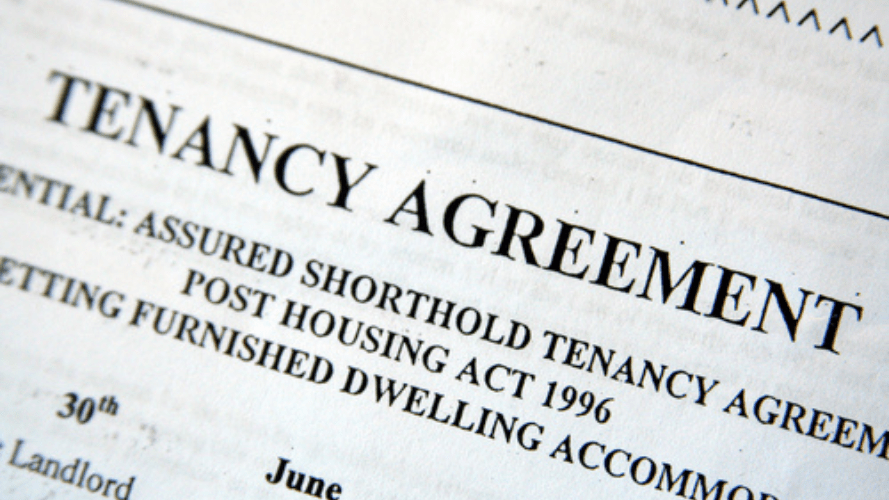If you're renting a property, it's vital you understand what type of tenancy you have.
If you're paying rent to a private landlord, you will either have a tenancy or a licence. Read on for a breakdown of some of the tenancy types available.
Tenancy or licence
As a paying occupier, you will likely have a tenancy or a licence. Tenancies are much more common and provide greater protection from eviction. Of course, any agreement you reach with your landlord can give you extra rights. However, any agreement cannot take away any of the rights current legislation provides you. These rights depend on the tenancy (or licence) you have.
It's also important to know that you don't have a tenancy or licence just because the landlord says that's what you have, and the type of tenancy or licence held depends on several factors.
Rights if you have a verbal agreement
If you have a verbal agreement, as opposed to a written agreement, you can still have rights as a tenant. If your landlord accepts rent from you for living in the property, then any verbal agreement may still be legally enforceable.
Written agreements are far more common than verbal ones, and you should always ask for your agreement in writing so that you and the landlord both have a copy. This means any disputes are easier to resolve, and both parties will know their rights and responsibilities. However, you must understand that your rights can't be taken away if you don't have one.
Rights in a joint tenancy agreement
In a joint tenancy agreement, all tenants have shared rights and responsibilities. This means you're all responsible for paying the rent, so if one person can't, the others will have to cover for them. This is known as 'rent liability'.
Furthermore, in a joint tenancy agreement, all other obligations are shared. This includes aspects such as keeping the property in good repair, so if one tenant were to damage the property, the other tenants might also be held responsible for getting this fixed.
Also, if one person wants to leave the tenancy and end the agreement, then the tenancy won't necessarily end. If one person leaves before the end of the term, the remaining tenants can reach a new agreement with the landlord.
What type of tenant am I?
If you have a written tenancy agreement, it should tell you what type of tenancy you have. However, there's also a possibility that you may have a different tenancy to what your agreement says. This must be correct, as different tenancies give you different rights.
The tenancy type can depend on the date you moved in, whether you're a student, the type of property, and whether you live with other tenants, with your landlord or on your own.
If you know all of this information, you can determine your tenancy type. These are as follows:
Assured tenancies
With an assured tenancy, you'll have more protection from eviction. Private tenants with assured tenancies have long-term tenancy rights. To have an assured tenancy, you need to have started your agreement between 15th January 1989 and 27th February 1997 and your landlord can’t have since given you a notice stating that you have an assured shorthold tenancy.
You're likely to be an assured tenant if you're a person (rather than a company or business occupier), you pay your rent to a private landlord, your landlord doesn't live in the same building and can’t enter whenever they please.
Assured shorthold tenancies (ASTs)
Most new tenancies are automatically ASTs, now the most common form of tenancy. These usually run for 6-12 months, giving you the right to notice of eviction and having your deposit protected. You should receive a contract to sign before you move in, and this will detail how much rent you'll pay each month, who's responsible for repairs and how long the tenancy lasts. You can read more about ASTs here.
You'll have an AST if you rent a private property, don’t live with your landlord and started your tenancy on or after 28th February 1997.
Crucially, it can't be an assured tenancy or an AST if your rent is over £100,000 per year or under £250 per year (£1,000 in London). Holiday lets and business lets also can’t be ASTs.
Excluded tenancies or licence
If you lodge with your landlord and share rooms with them – such as the kitchen or the bathroom, you may have a shared tenancy or licence. In this type of agreement, there's usually less protection from eviction.
Regulated tenancies
If your tenancy started before 15th January 1989, then it may be a regulated tenancy. As part of this, you can apply for what's known as 'fair rent', which the Valuation Office agency sets. If you have a regulated tenancy, you'll also have increased protection from eviction.
These are long-term tenancies with private landlords, and you may still be a regulated tenant if you later signed a new agreement with the same landlord.
Regulated tenancies can be either for a fixed term (a year, for example) or periodic (month to month or week to week).
What if my agreement expires?
If you have a fixed-term tenancy (if you signed up for a year, for example), then it may expire. If this is the case, your landlord can either give you a new agreement or have the tenancy renewed as a 'periodic tenancy' where it continues as before but may roll from month to month or week to week. If you wish to leave the property when your tenancy expires, you'll have to provide your landlord or managing agent with written notice. This should be stated in your tenancy agreement.
If you're still unsure about what type of tenancy you have, then consult Shelter's online tool. This should inform you of all of your rights.
Enjoying our content?
Get the latest letting news, views and tips from HomeLet straight to your inbox.

